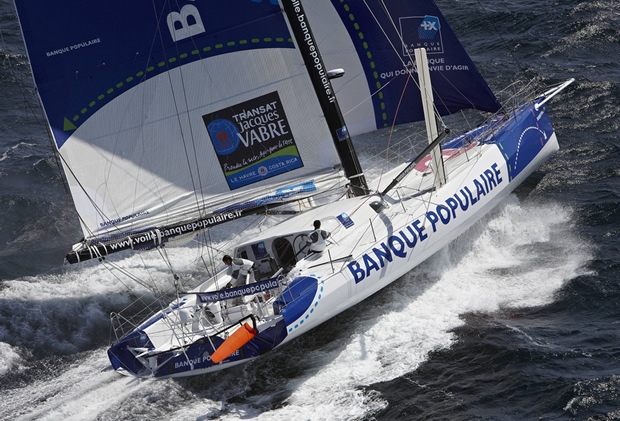
VPLP-Verdier sistership IMOCA 60s
Fighting for third place in the Transat Jacques Vabre’s IMOCA 60 class are two VPLP-Verdier design sisterships. Banque Populaire was formerly Foncia, launched last year for Michel Desjoyeaux to compete in the Route du Rhum and then the Barcelona World Race, until she was forced to pull out of the doublehanded non-stop round the world race when the top of her wingmast broke off. Since then the most radical of the new generation 60s has been sold to Banque Populaire (Foncia’s parent company) which has installed as their new skipper Armel le Cleac’h, the double Solitaire du Figaro winner and who, as skipper of BritAir, finished second in the last Vendee Globe.
Sailing with le Cleac’h is the British sounding Christopher Pratt (who’s mother is English, but he is French). Pratt is yet another ex-Figaro sailor who has been extremely fortunate over the last few years in winning French versions of the Artemis Offshore Academy, first the Challenge Espoir Credit Agricole, gaining him backing for a two year Figaro campaign, and then, following an arduous nine month trial, in the autumn of 2008 he was announced as the winner of another competition to win a place aboard Marc Thiercelin’s DCNS 1000 IMOCA 60 which he raced in last year’s singlehanded Route du Rhum.
Pratt joined up with Le Cleac’h in July this year but their training aboard Banque Populaire was cut short when at the end of the July, while out in 20 knots and a moderate sea, an alarming crack developed across the side deck and down the starboard topside (to around 1m above the water). It was subsequently deemed that having no bulkhead down below between the main bulkhead to half way back along the length of the cockpit was inadequate and so this has since been repaired with the inclusion of extra ring frames and longitudinals.
“It was amazing that there was no water inside the boat, but when it happened we were wondering where the lifeboat was!” recalls Pratt. “We dropped all the sails and went back to Lorient with three reefs in the main.”
Prior to the Transat Jacques Vabre start le Cleac'h and Pratt had only spent two to three months getting acquainted with the boat and its wingmast and deck spreader rig configuration, when and how to use the water ballast and the boat’s unique heavily toed-in daggerboards, which emerge from the boat at the edge of the deck.
“We are still wondering if we should put 1m or 1.5m of daggerboard down [for example],” said Pratt beofre the start. “I don’t have enough experience to talk about using the boards, but is not easy because you have to pass the sheet of the sails inside them upwind and outside them when reaching.”
One advantage of being part of the Banque Populaire team is that with the maxi-trimaran (now on stand-by to head off on a Jules Verne Trophy attempt) as well as Jean Gregoire’s Figaro campaign, the team, like Groupama, is set up like a mini-America’s Cup campaign with in-house specialists. So if it comes to the crunch, as it did in July, they have 20-25 people to draw on if need be.
“You have a design office within the team and that is amazing," says Pratt. "If you break something, you go and see someone and they think about it, draw something and two days later you have a new piece...”
Following the mast breakage in the Barcelona World Race, the wingmast has been replaced (the reasons for the breakage are not public) and the carbon keel foil has also been replaced with a steel one, allegedly because it is safer for when the boat competes in the Vendee Globe next year and although it is heavier, it has less drag than the fatter carbon foil.
According to Pratt in comparison with the Finot-Conq design he sailed last year Banque Populaire is lighter and you can feel her accelerate more in light winds. “It is a really, really good boat. We just have to learn how to use it at the maximum."
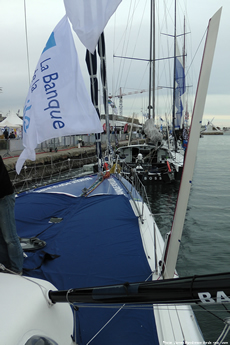 |
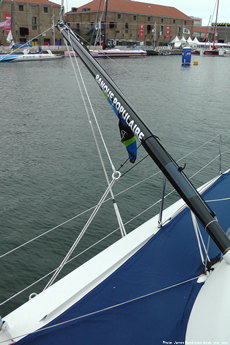 |
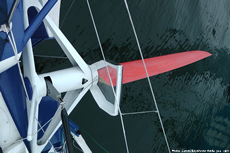 |
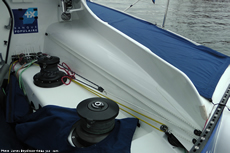 |
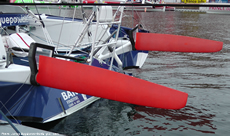 |
MACIF
Even newer to their boat prior to the start of the TJV were the crew on Banque Pop’s sistership MACIF, which shares the same hull moulds and builders – the hull was constructed by Green Marine, the deck at JMV Industries in Cherbourg, and all the bits put together and finished off by CDK Composites in Port la Fôret. Only launched in mid-August, her build took just over eight months, .
Francois Gabart, 28, is the only ‘new generation’ skipper to come into the IMOCA class in this cycle with a new boat. His sponsor is MACIF, the 20 billion Euro turnover French insurance, banking and equity management group, which previously supported Gabart in his Figaro campaign. MACIF continues to support new talent, running trials for places on the team’s two Figaros, currently backing Paul Meilhat and Fabien de la Haye, who finished sixth and second respectively in this year’s Solitaire du Figaro.
Like Pratt, Gabart is another ex-Challenge Espoir winner and clearly one of the most talented sailors of his generation, having finished second behind Armel le Cleac’h in the 2010 Solitaire, the same year winning the Figaro’s Cap Istanbul race. On the Transat Jacques Vabre he is sailing with ex-Areva Challenge skipper, match racer and most recently tactician on the Audi All4One TP52, Sebastien Col.
Gabart and his team worked with Michel Desjoyeaux’s company Mer Agitée in putting the boat and the project together while Col brings his wealth of experience from both the AC and TP52 classes to the team.
MACIF is a near identical sistership to Banque Populaire, but there are differences between the two boats. More structure was put into the hull from the outset (and done in a lighter way than the retrofit on Banque Populaire) and her daggerboards are even more toed in – “by more than 10 degrees”. Her twin asymmetric boards are also a different section – one created by VPLP with slightly more chord, rather than the Farr boards (taken from Desjoyeaux’s 2008-9 Vendee Globe winner) used on Banque Populaire, although you would hard pressed to spot the difference.
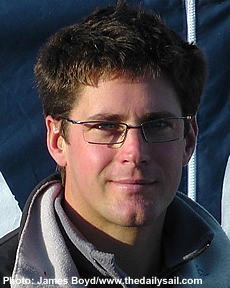 Antoine Gautier, an in-house designer with the team and general technical guru when it comes to these things, points out the significant difference between the IMOCA 60 and the VO70 rules: in the latter there are centre of gravity limits on the keel and rig packages and because these don’t exist in the IMOCA 60 class (while under the latest iteration of the rule the mast height and therefore sail plan is limited), the principle design driver for IMOCA 60s is now about gunning for maximum righting moment.
Antoine Gautier, an in-house designer with the team and general technical guru when it comes to these things, points out the significant difference between the IMOCA 60 and the VO70 rules: in the latter there are centre of gravity limits on the keel and rig packages and because these don’t exist in the IMOCA 60 class (while under the latest iteration of the rule the mast height and therefore sail plan is limited), the principle design driver for IMOCA 60s is now about gunning for maximum righting moment.
Thus one aspect, which we hadn’t considered when MichDes gave us the guided tour to Foncia last year, was the effect having the daggerboards heavily toed in and positioned outboard has on the righting moment. While in the IMOCA 60 rule this is limited to 32 ton metres, presumably the boat is measured with both boards down, but when sailing the angled board is raised, moving its weight significantly to windward.
Otherwise the differences between the two sisterships are small – MACIF has slightly smaller winches and the fixed forestay required by the class rule, attaches to the mast 1m lower.
Similarly, while Banque Populaire has changed from a carbon foil to a thinner but heavier fabricated steel alternative, MACIF had this designed in from the outset and she has a lighter bulb, the net difference is down to around 150kg heavier than the original carbon foil/bulb package Foncia was originally fitted with.
Gautier reckons that within the new crop of IMOCA 60s, PRB is the lightest and MACIF is not far off, having come in at the same weight as when Foncia/Banque Populaire was launched last year, despite having a heavier keel.
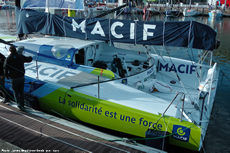 |
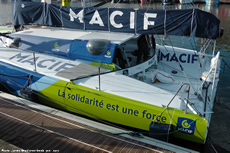 |
MACIF shares the same giant movable sliding coachroof as Banque Populaire and according to Gautier this has a profound effect in improving life on board when it is pulled shut, enclosing the entire working area of the cockpit - again philosophically poles apart from the VO70s.
The JMV-built, CDK-finished wingmast and its accompanying deck spreaders are held in place with Navtec PBO stays, which Gautier says are both lighter and cheaper than carbon. “All the Volvo 70s are going for carbon because they have a CoG rule. They are working to improve their windage and carbon is smaller diameter. We don’t have a CoG rule so we need to go for the lightest rigging. Navtec did some lighter stuff for us.” The backstays are from Maffioli, a mix of PBO and Dyneema.
Complying with IMOCA rules, a maximum of 10 sails are carried on board MACIF, so mainsail, trysail, J1-J3 (Solent, staysail, storm jib) upwind, plus five sails for downwind. Their downwind inventory in the TJV, which Francois Gabart says will be slightly different for the Vendee Globe next year, includes a Code 0, spinnaker, a 2.5oz big genniker, an A3 and a fractional genniker. According to Gautier some boats sail with two spinnakers, instead of the big genniker and some swap their fractional genniker for a fractional spinnaker. Allegedly Virbac-Paprec 3 isn’t using a Code 0 on the Transat Jacques Vabre.
Down below on MACIF, as on Banque Populaire and on MichDes' Farr-designed Vendee Globe winne,r the lines from the mast drop down to just above the keel box and then are fed back to the pit area on each side of the companionway via two fairly obtrusive beams running through the middle of the ‘saloon’ area. This lowers the centre of gravity of both the ropes and the turning blocks, but also allows any water coming down the apertures in the deck to run away into the keel box.
As on most IMOCA 60s the canting keel is operated by one ram (VO70s have to have two under their rule) and according to Gautier one of the differences between the last generation Farr boats and the latest generation VPLP-Verdier designs is that the keels on the latter only cant to 35° whereas on the Farr boats they go to the full 40°.
On both Banque Populaire and MACIF they are now running B&G performance instruments, the nav station on both boats attaching to a giant hinged nav table that can be swung up to weather. MACIF we understand is the first Mer Agitée boat not to be fitted with NKE electronics.
A third or fourth placed finish in the Transat Jacques Vabre, assuming all stays as it is over the next two days would be a fine result for MACIF. Prior to the start Francois Gabart said he hoped to arrive in Costa Rica in the top five given that MACIF is the newest boat in the fleet and lacked time on the water.
See Michel Desjoyeaux guided tour to Banque Populaire (when she was Foncia) here
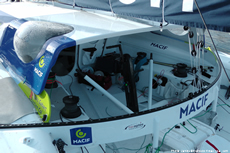 |
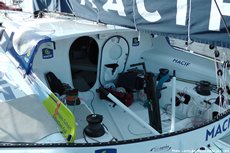 |
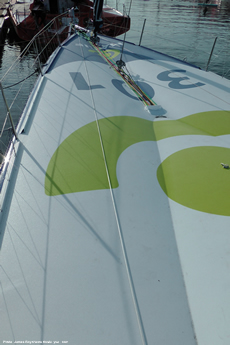 |
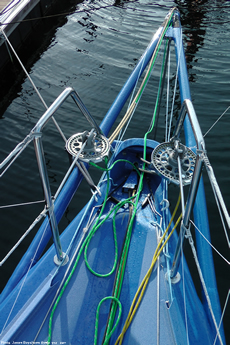 |
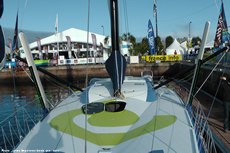 |
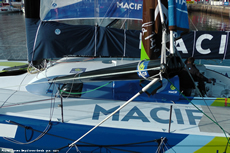 |
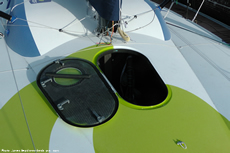 |
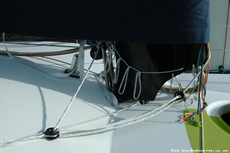 |
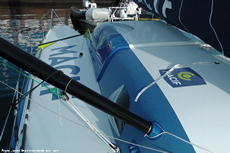 |
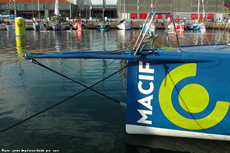 |
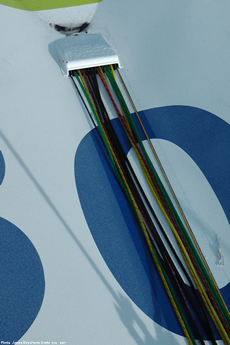 |
|

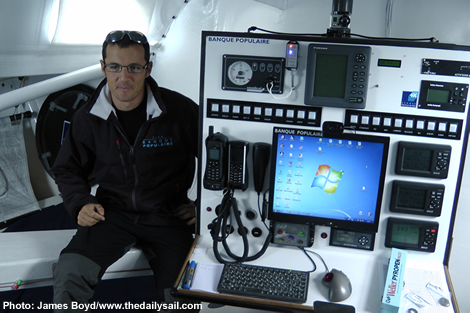
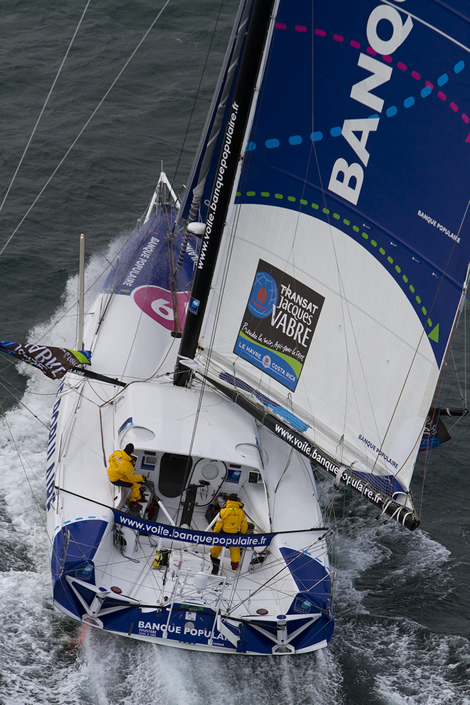
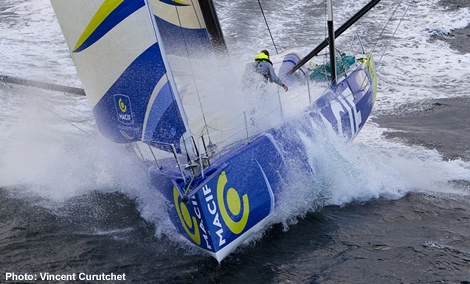
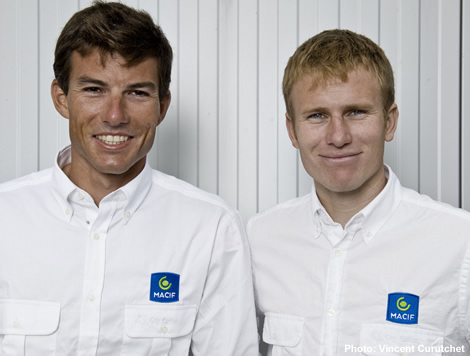
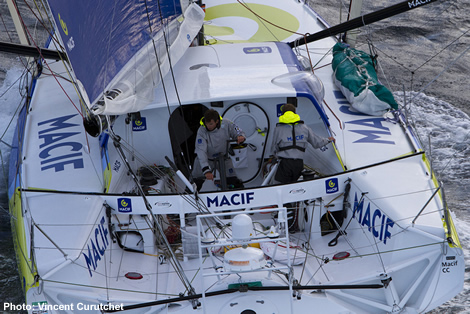









Latest Comments
Add a comment - Members log in